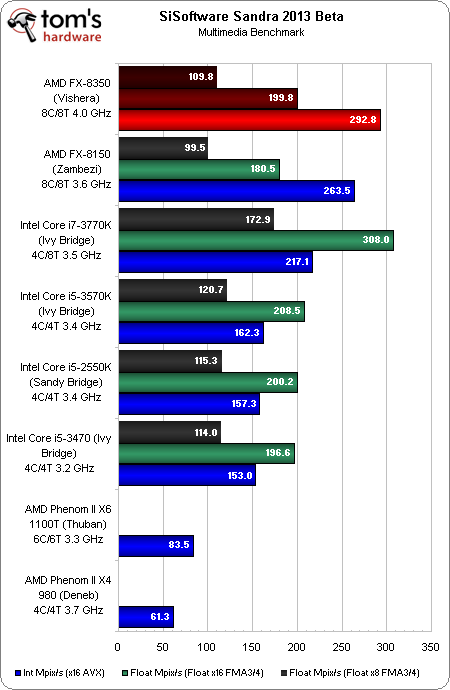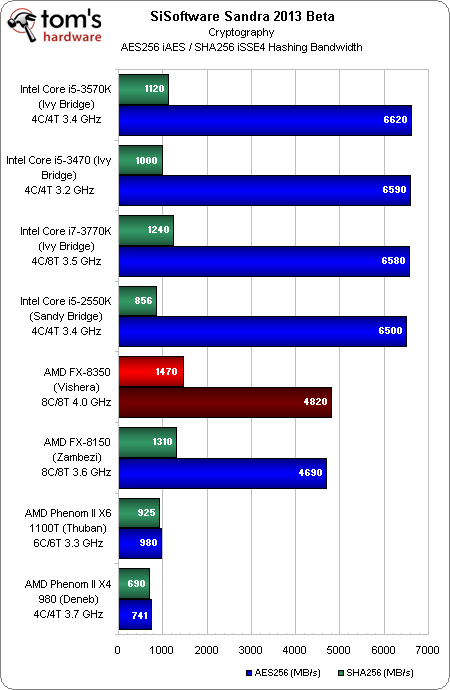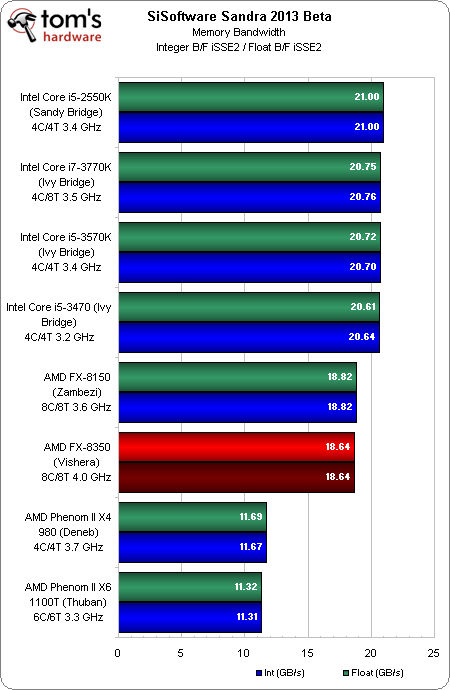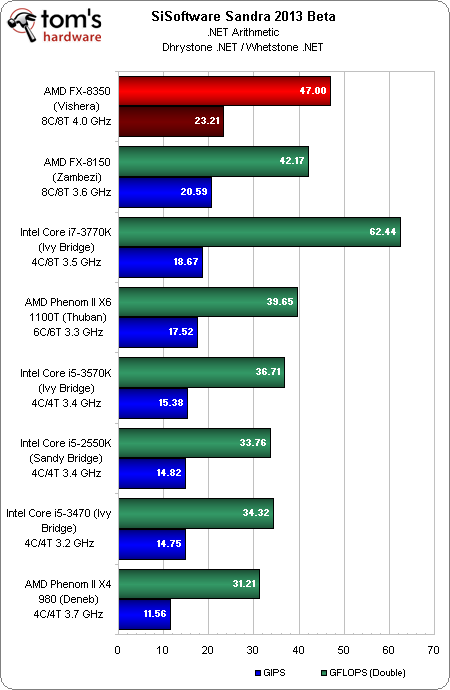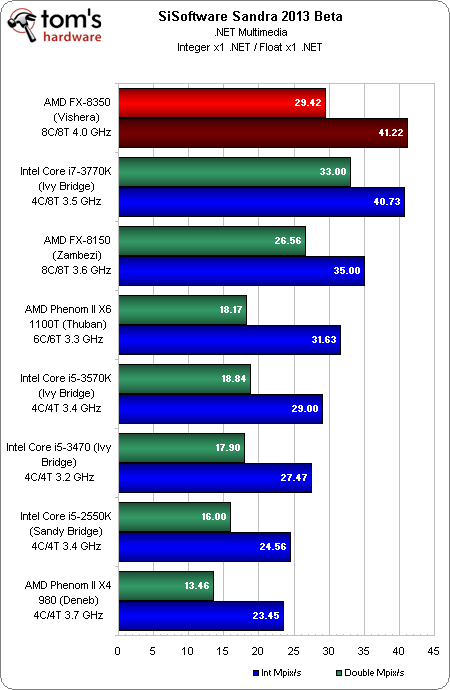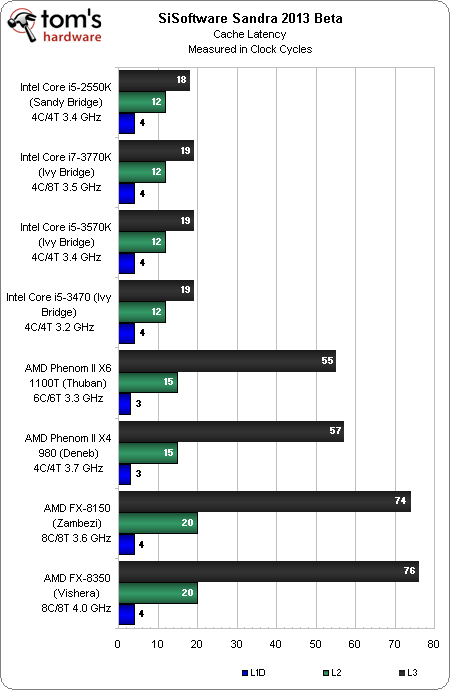AMD FX-8350 Review: Does Piledriver Fix Bulldozer's Flaws?
Last year, AMD launched its Bulldozer architecture to disappointed enthusiasts who were hoping to see the company rise to its former glory. Today, we get an FX processor based on the Piledriver update. Does it give power users something to celebrate?
Benchmark Results: SiSoftware Sandra 2013 Beta
Remember that AMD’s Bulldozer architecture added hardware acceleration for AES encryption and decryption, and this naturally carries over to Piledriver. Basically, this capability is bottlenecked by memory bandwidth—the faster you can feed the CPU, the better it performs in the AES-256 benchmark.
After running a handful of spot-checks on performance, we decided to use 16 GB of DDR3-1600 memory instead of 8 GB of DDR3-1866, particularly since the RAM drive we use for alleviating storage bottlenecks would carve some of that memory away anyway, and the extra bandwidth did nothing to speed up our results. Nevertheless, FX-8350’s loss to FX-8150 is a result of that lower data rate. Had we used DDR3-1866 modules, the FX-8350 would have matched the Ivy Bridge-based chips at DDR3-1600 closer to 20 GB/s.
It doesn’t appear that Vishera’s cache latencies—often thought to be one of Zambezi’s performance issues—are any different. AMD's architects confirm the L3 isn't changed. The L2's minimum latency isn't any different, either. But average L2 latency should drop as a result of optimizations.
Get Tom's Hardware's best news and in-depth reviews, straight to your inbox.
Current page: Benchmark Results: SiSoftware Sandra 2013 Beta
Prev Page Benchmark Results: 3DMark 11 Next Page Benchmark Results: Content Creation
